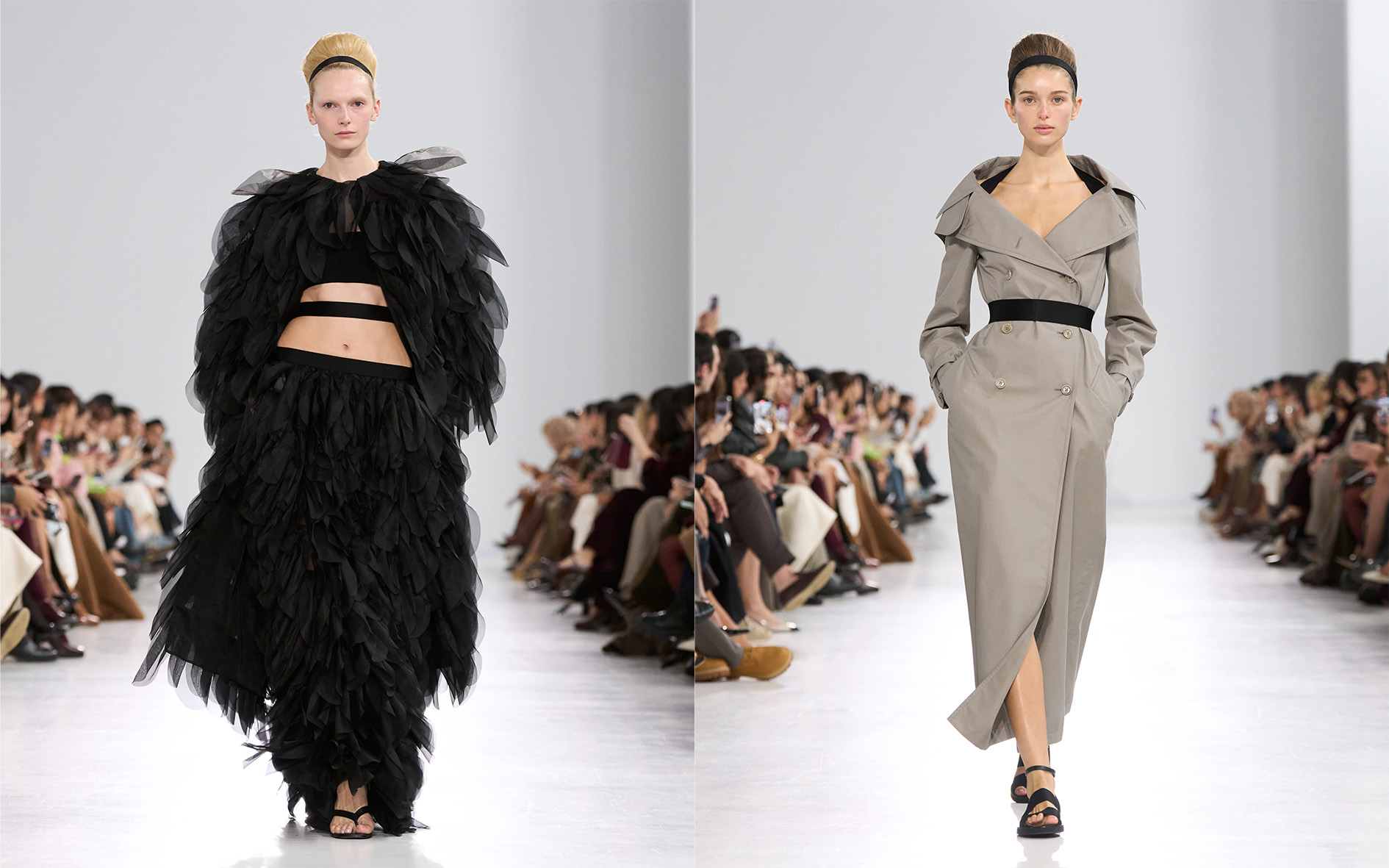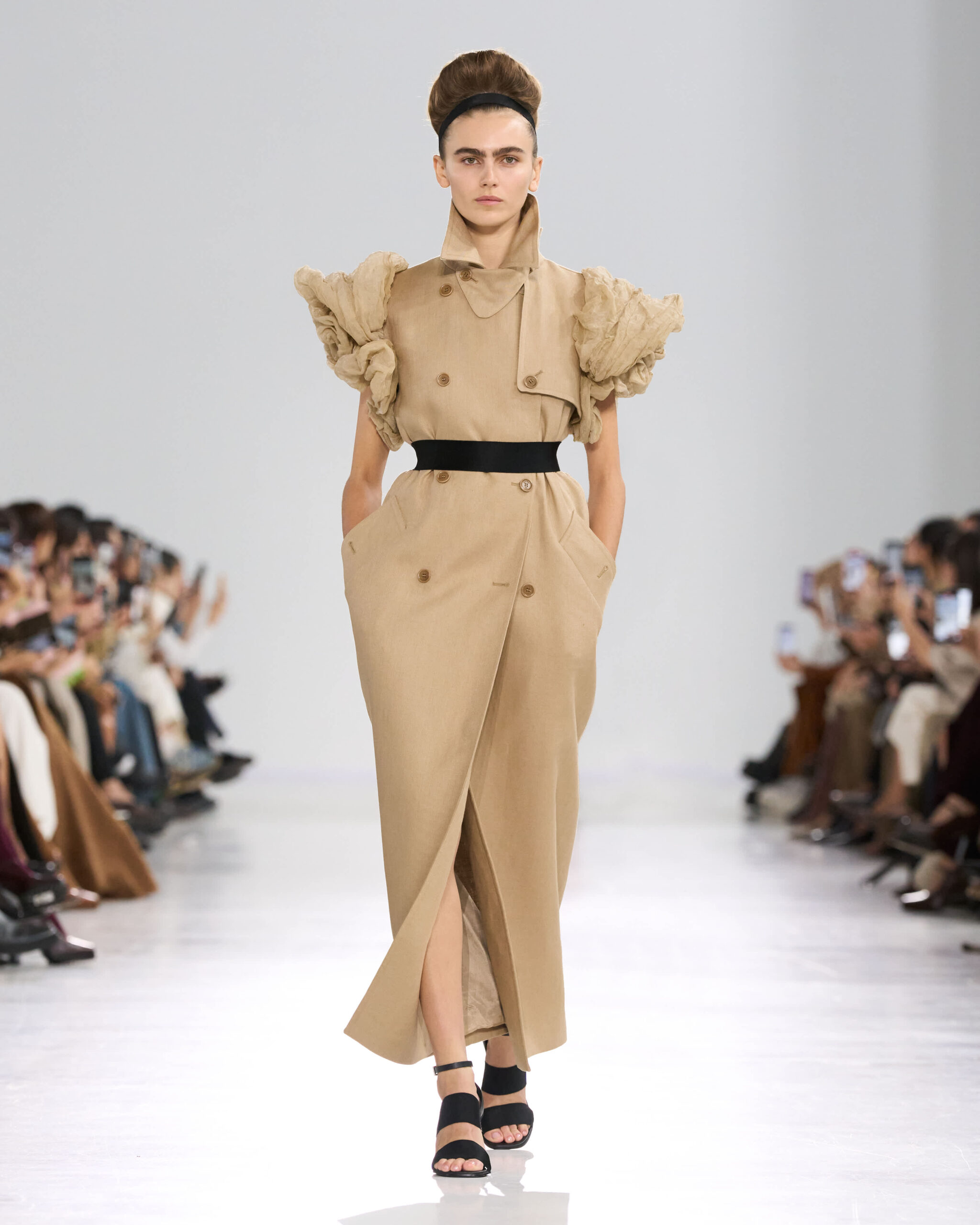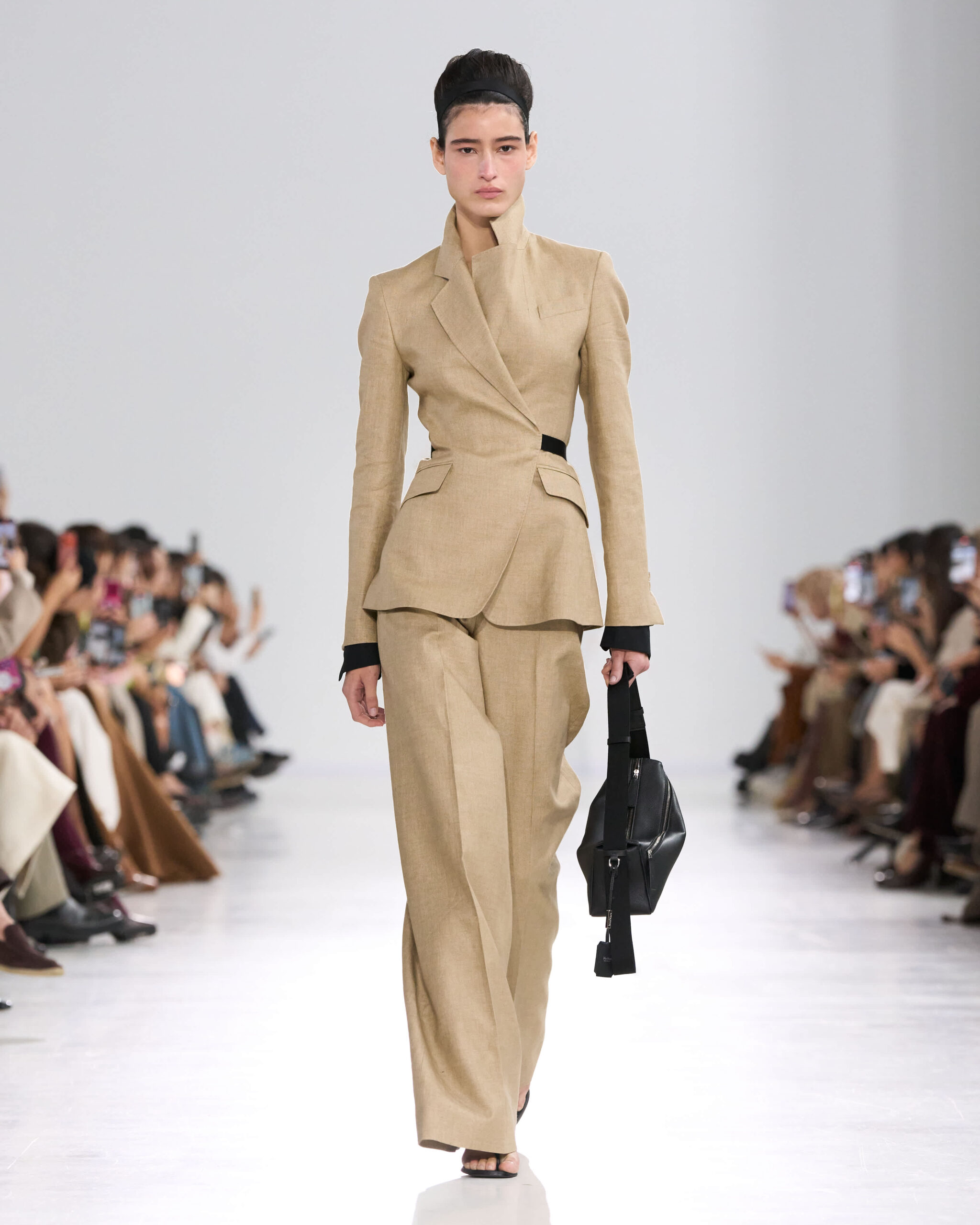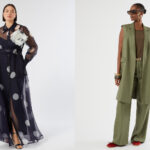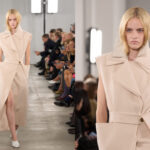A rigorously detailed trench coat features an intricately folded corona at the shoulders, like the unfurling leaves of a gilded acanthus or the plumage of a fabulous bird. A voluminous gauzy crest, like the regalia of some magnificent aquatic creature, traces the contours of the hip on an otherwise strict pencil skirt. Like the petals of an exotic hothouse bloom, or the fronds of an anemone, an organza skirt is made up of hundreds of cut and folded pieces. Impalpable, barely-there colours like the ones favoured by its muse, the Queen of Rococo.
There’s a hint of otherworldliness about this collection, but only a hint. Black elastic belts, harness like straps, bags and shoes reveal an underlying rationale as sharp as Mme de Pompadour’s own wit. Impeccably tailored jackets and low slung pants anchor this collection firmly to the now.
“Prizing elegance, sweet emotions, and fantasy more than morals and truth; […] ignoring virtue and conventions to cherish only the pleasures you are definitely experiencing now.” This is how the author Novala Takemoto describes Rococo, asserting that the very foundation of the style is sustained by “ultimate individualism.” Rococo “embodies the spirit of punk rock and anarchism more than any philosophy.”
Madame de Pompadour most certainly deserves her place in Max Mara’s pantheon of remarkable women. Not a high born aristocrat; her power and influence were accrued on her own merits. She patronized artists such as Watteau and Boucher and despising “common or banal” objects, she founded the Sèvres porcelain factory. An habitué of the salons, she held her own in philosophical debates with Voltaire and Montesquieu, and she was an accomplished actor who starred in and hosted plays and opéra-ballets by Rousseau, Molière and Racine. And she was a staunch supporter of Diderot’s controversial Encyclopédie with its aim to encourage a more enlightened, virtuous and happier society.
Rococo – from the French word rocaille, referring to the shell-encrusted rockwork used in grottoes – is inspired by nature, with an emphasis on asymmetry. The eighteenth century fascination with the cabinet des curiosités inspires prints featuring all kinds of life on earth, fauna and flora of land, sea and air delicately painted in layers of ethereal organza. Max Mara discovers power in playfulness, elegance in whimsy and strength in lightness.
For more information please visit:


